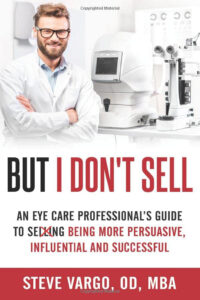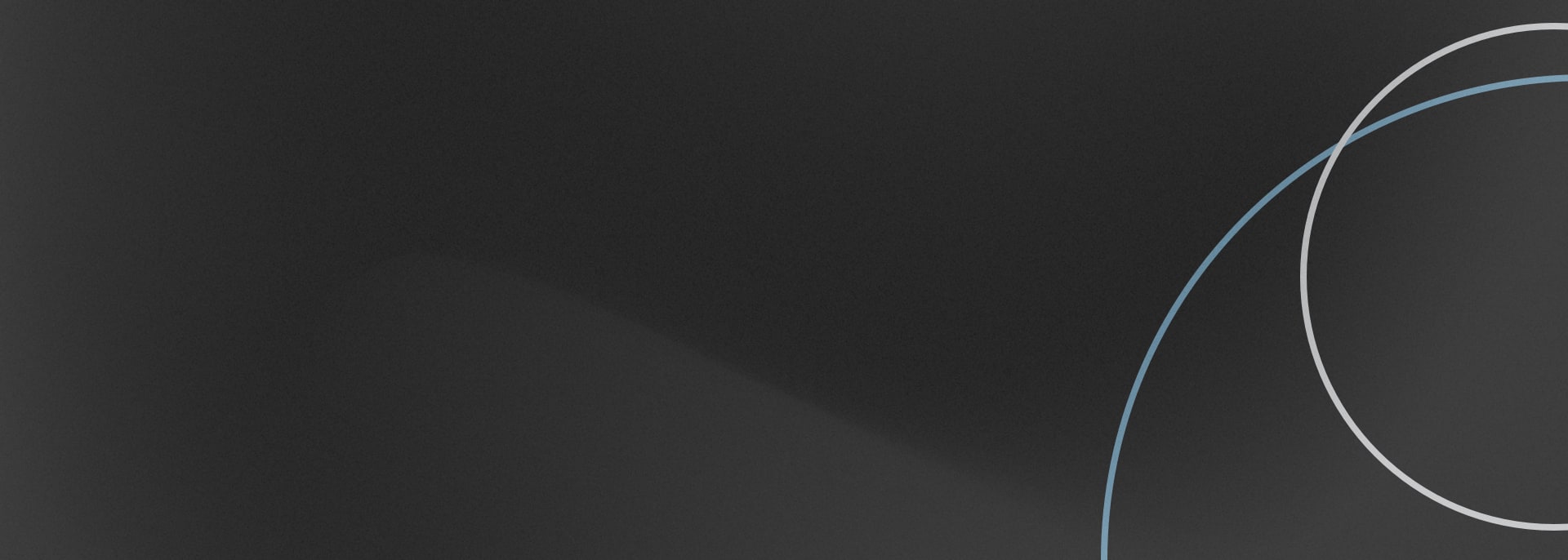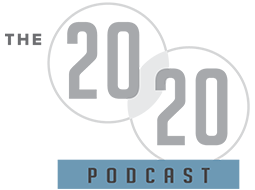
Optometrists are good at what they do, but they typically don’t have a strong background in running a business. More often than not, it is up to us to learn on the job. In this episode, Dr. Kerry Salsberg and Dr. Steve Vargo share their insights on how you can elevate your business. Dr. Salsberg runs a big, busy optometry practice and he continues to find ways to evolve and grow the business. Dr. Vargo is a renowned consultant and author of multiple business books. Join them as they reveal their personal journeys of learning on the job and how they turned their practices into thriving enterprises. Don’t miss this opportunity to gain a wealth of knowledge and take your own business to the next level!
—
Watch the episode here
Listen to the podcast here
ELEVATE Your Business – Dr. Kerry Salsberg And Dr. Steve Vargo
It’s a great interview with Dr. Kerry Salsberg and Dr. Steve Vargo from a little while back when they were in town here in Vancouver for the OSI Western Summit. They reviewed the two lectures that they had done and gave the highlights of their lectures and the important takeaways for all of us. Whether you were there or not there, it’s a nice little review of what they were talking about. They are two amazing people in the eyecare industry that we can always learn from. Hopefully, you enjoy it. Here’s the episode.
—
Welcome back to another episode. Thank you so much as always for taking the time to join me here. I’ve been saying this a lot in some episodes. Here is different. We are with the OSI group at the Western Summit at the wonderful River Rock Hotel and Casino in Richmond, BC just outside of Vancouver. I am here with two amazing guests who have been on the show before and I’m very fortunate to have them here again. I’ll introduce them just in a second.
Before I do that, I want to let you know that this is going to be the first and hopefully, a long series of collaborative shows that we do with the AOE, Academy of Ophthalmic Education. Mr. Ali Kahn has been generous enough to create this collaboration and share his roster of amazing speakers, but also all these other resources that they have so we can share the knowledge and all the amazing information that the speakers provide with a wider audience.
I’m grateful and honored to have this collaborative series of shows. The two guests that I have with me, if you’ve been tuning in for a while, you’ll recognize their names and faces. Dr. Steve Vargo, who has been on the show a couple of times. Steve was talking about patient communication and how to get that patient or even your staff or anybody else you’re communicating with to the yes answer that we’re all looking for. Dr. Kerry Salsberg from Toronto, Ontario was here speaking on profitability, KPIs, how to differentiate your practice, and how to succeed in these days market.
We’re going to touch on some of those topics in this episode but make sure you connect with these guys as we go through. We’ll say it a few times where to find them how to talk to them. Why don’t we do a real quick intro? I want you guys to tell me how you have been finding the OSI Western Summit and the value that you’re finding.
Thanks, Harbir, and thanks for having me. I’ve been here for the day I presented, but I listened to a great presentation on how to improve the capture rate. Having these forums is so important for independent eye care practitioners and their staff because it’s an opportunity to network, to have conversations about the trials and tribulations of practice, what’s working, what’s not working, and just to be able to communicate with other doctors that you’re facing the same challenges. We are in a profession where there are so many opportunities. How do we capture that? How do we do that seamlessly? Having these types of forums are so important to get that education out and then apply that in your practice.
I’ll say that from my own perspective, I agree with you. I echo that being in the audience, watching your talk, and watching Steve’s talk, it’s interesting to see how many people are agreeing and how many people are on the same page. When you ask the question, “How many people are having this difficulty?” you realize most people in the room are putting their hands up. When you asked to list some of the challenges that we’re having, how many people were echoing the same challenges? You don’t want everyone to face challenges, but it’s nice to know only one.
Being able to talk about it. We practice in a 10×10 box. We have no idea what’s going on in the real world and it’s nice to know that we share the same problems. Having the ability to talk to people about ways to overcome these things, having this networking and live in-person meetings is so important.

Steve, how about you?
I would agree with everything Kerry said. The opportunity to come together live. My presentation was two hours. The first hour was basically me presenting and the second hour was more workshop style where I threw different topics out there and had them talk around their individual tables and then share with one another. You get so much out of that when you hear from other doctors. I almost somewhat selfishly do it that way because I learn a lot as well. I find that there is a lot of agreement.
One thing, whenever I do that workshop-style format, people will come out. It’s almost therapeutic because a lot of times people will say, “I didn’t realize so many other people were having those same challenges.” What’s interesting is even when they disagree on something maybe how to handle a certain situation, they still hear from other people who handle it differently and you can learn from that too. You may think, “I always handle it this way,” but you hear from somebody else who had success doing it a different way. There’s a ton of value that comes with this live format.
It’s a combination of you hearing something completely different than what you’re doing and you think, “I can implement that.” You hear someone saying almost the exact same thing that you are thinking or you’ve been practicing and it gives you the confidence, “I must be on the right track.” It’s a nice feeling to have that it’s not necessarily in such a large format either. Often, when you’re in a large lecture hall type of a situation, in which you end up being in some of the bigger conferences, you don’t get that intimate relationship, that intimate conversation.
I appreciated both of your talks. You were both fantastic sitting around with the people that I was sitting with. Everybody was complimenting different facets of your talks. They were valuable. You know that already. I’m sure the surveys will say the same thing. I wanted to take a couple of topics that you talked about and put them together for a little bit of an interview here.
First off, profitability. Kerry, you have a big busy practice and you talked about how it hasn’t always been that way, but you’re paying attention to the metrics. Knowing where you are and where you want to go has brought you to where you are now. Steve, you are no longer a practicing optometrist. For those of you who don’t know, Steve doesn’t see patients anymore, but he has been in a consulting role. He writes books, he speaks, and he’s extremely knowledgeable about the idea of metrics, KPIs, and practice growth. Two amazing people to have this conversation with.
I’m going to give you general questions because I know you guys can run with it. Let’s say 2 or 3 things that you think are mistakes that you’ve seen a lot of practitioners making or 2 or 3 things that you want to share with practitioners out there to help them improve their profitability and the success of their practice.
When we get out of school, it’s so important for us to raise the money we’ve spent on schooling costs. We clinically we’re very sound, but in terms of business acumen, we just don’t have it. We’re thrust into this clinical practice and that’s a failure of the schools. What I’d like for practitioners to do is not just wait until the end of the year to get their financial P&L statements to see how well they’ve been doing, but to track that on a weekly, quarterly, monthly, and yearly period to understand the mechanics of their business. They have to understand what their expenses, their revenue streams are, and to be proactive as opposed to reactive.
A lot of people run their practices from intuition and gut feelings. I did that for the first twenty years of my practice. I reached a ceiling where I said, “I’m not growing the way I wanted to. I don’t know what I don’t know.” I took the opportunity to join OSI and some US buying groups or US networking groups to share ideas, collaborate, and realize that I wasn’t the only one that was having these problems.
They’re solution based. They’re not problem-based. Here’s the problem. Here’s the solution. At the crux of the matter, you have to know your numbers. You have to know, are you running a profitable business? What can you take out as an owner? What your cost of goods should be, what your staff costs are. Until you know those things, you’re just doing it based on feeling. Unfortunately, that doesn’t always work to your advantage.
You mentioned something in the talk. It may have worked in the past and sometimes, if you’re doing it, it may work just by sheer luck. The fact that there are so many competitors in the market who are basing all of their actions on these metrics and they’re doing it in an incredibly detailed way. Maybe they have more powerful tools than we do, but they’re doing it and we’re hoping we get there. There’s no way we can compete with that. I thought that was an eye-opening message that you portrayed. You also shared a story right in the beginning about you going down to Texas. I wonder if you could give me a quick short version of that.
We had a networking meeting in Dallas. I’ve never been to Dallas and my brother was turning 50. We brought my brother’s friend and my dad who’s also an optometrist down to Texas to do the southern hospitality way of life which is eating barbecue, going to a bull riding contest, and going skeet shooting. Being a city boy who’s never shot a gun, we went to a Dallas range and we said we’d like to shoot a shotgun. She goes, “What kind of gauge?” I said, “I don’t know. Are there other gauges?” She goes, “I’m going to give you a 20-gauge shotgun,” which I found out to be like the teenager shotgun so you don’t blow off your shoulder. I said, “What do we do now?” She goes, “You can go to the range and press the buttons and the skeets go out the clay pigeons.” I said, “We’ve never done this before.”
She gave us a lesson on how to load the ammunition and to make sure that you don’t jam the gun and she goes, “On your way.” I said, “There’s no waiver? Is there a supervisor out there?” Not in Texas. No barriers to entry in that market. Long story short, we had five guys shooting guns at pigeons and not hitting anything. A guy comes down with a cowboy hat and a toothpick. He reminded me of the guy from Yellowstone, Rip Wheeler. He says, “You boys need some help?” I said, “We certainly do.” He says, “When you’re shooting, I see that you’re closing your eyes, you’re shooting blindly. You’re also not tracking the target so you’ve got to continue with the gun.”
Just those two tips turned us from being complete amateurs to hitting 2 out of the 5 targets and everybody was able to hit this target. It just goes to show you a little bit of knowledge can get you a long way. There are a lot of similarities in optometric practice that we’re also shooting blindly and not tracking our targets. It’s very important to benchmark and look at our KPIs. Having that skillset will grow your practice. If you measure it, it will always improve guaranteed, but you got to measure it.
It’s very important to benchmark ad look at our KPIs. Just having that skillset will grow your practice. If you measure it, it will always improve.
How about in the same vein, same topic? If you could share, Steve, a couple of things that you’ve seen mistakes that people have made if they correct those make a profound difference in their business, or a few pieces of advice that you’d like to share.
We’ll just build on the KPI aspect because I’m sure Kerry will agree with this too. It’s very important to know your numbers and to be mindful of those and that’ll tell you areas you need to improve and where you’re ranking relative to other practices. Also, it helps you determine what you want to drive. I’ll give you an example.
I get a lot of inquiries and calls from offices that want to set up a bonus program for their staff, some incentive program. They get hung up on what the actual goal is. What’s the bonus? If we grow 10%, then everybody gets something basic like that. I’ll say, “That’s fine. What do you want the staff to do differently that’s going to drive those numbers?” That number is a lagging indicator of whether or not what you’re doing is working or not. A big mistake is dangling that care out there for staff and assuming that their productivity is going to go through the roof just because you offered them a bonus.
Sometimes that’s the case, but a lot of times, it’s not. I hear over and over from doctors who say, “I offered a bonus based on some metric that we chose and it didn’t create any difference in productivity.” It’s important more of a leadership issue in making sure the staff is clear on the things that they need to do. Setting those clear expectations on what they need to do differently that’s going to drive those outcomes.
I’ll add, sharing a vision. What’s your vision? Also, having buy-in from your other team members. What are the deliverables that you expect your expectations? Yet this is where we are, this is where we want to go because if it’s not shared, it never happens. Especially the expected change and they have no roadmap to get there. It’s going to fail.
You mentioned the buy-in from this staff. We’ve talked about this before and that’s important as well. It is important that we set expectations but at the same time, give the staff a voice in these changes. That’s the other thing I always stress because a lot of times business owners, doctors, their instinct is to go to the staff and say, “These are the things you need to do.” Setting expectations is fine, but at the same time, I’m a pretty big fan of looking at the staff and saying, “What are your ideas? Here’s where we’re trying to get to. Let me hear your ideas on how you’d like to do that.”
It doesn’t mean you’re going to agree with everything. It doesn’t mean you can green-light everything, but when you give them a voice and give them a sense of control over the outcomes, they’re much more likely to follow through. There’s a study I use in some of my lectures that shows the number one reason why new hires don’t work out. It comes to a lack of coachability, but the 1 of 2 reasons is they don’t like your ideas and they think their ideas are better. Why fight that? Why not just give them a voice in the process? You’ll find a lot more productivity they rise to the challenge a lot more when they feel like they have some sense of control over the outcomes.

At least they feel like they’re being asked and they’re involved in the process versus just being told.
That’s where you’re going to get the pushback and the friction. If they don’t like your idea, if you’re telling them what to do, it’s always the slippers.
Starting to feel more like the movie Inception is something that we need to learn how to do. How to plant ideas in our patients and staff’s heads. That might not be legal. Regarding that, one of the things that I wanted to talk to you about was the staff and associate doctors and one getting the buy-in or what’s the challenge a lot of people have a turnover or a hard time finding good people. What’s the importance of building a strong culture and how do you go about that? You could talk about profitability or about people buying into what you foresee or plan for your business.
It’s important to talk about your vision. Where do you see yourself now and where do you see yourself going? I also think it’s very important to be transparent. In our office, we’re very transparent about our P&L statement. All too often staff see a big practice making millions of dollars and they think it’s going to my pocket. I want them to be aware of X number of dollars going into the tissue paper and the pens and to turn the lights on and the inventory. Having that transparency gets a better understanding of what it takes to run a business. It’s not all about the top-line revenue. You got to look at all your other expenses. In terms of associates, you got to make sure that they realize that it’s up to them to decide how much money they want to make.
Associates sometimes get hung up on the percentage that they’re going to make, but you don’t bank percentage points. You bank dollars. What I’ve tried to do in my practice is to create a blank canvas to give them all the things that they need. Whether it’s telephone staff, contact lens staff, equipment, or inventory, everything’s done for them so that they can generate the most that they can. They have to empower themselves and have ownership of what they do in terms of their revenue generation.
A lot of the time associates nowadays, because they’re in demand, have expectations of making a certain amount of money. Young associates, I just don’t feel, are at that stage where they can generate, they have the clinical acumen or the business acumen to generate that money. It’s important to train your staff and your associates the way you envision your practice to be. If there’s a buy-in grade, if there’s not, maybe they’re not the right fit for you.
It’s important that to train your associates the way you envision your practice to be. And if there’s a buy-in, great! If there’s not, maybe they’re not the right fit for you.
That openness, that transparency, that’s probably uncomfortable for a lot of people. I would imagine the P&L statement like that. Here’s where we spent all our money, how much we paid out generally to our ODs or our staff, and all these kinds of things. Do you recall what your annual cost of toilet paper is?
Our paper towel costs about $600. Toilet paper is now supplied by the building, so I don’t take care of it. In terms of my rent, it’s buried in there. I’m paying two times more than I should.
That’s why your rent is $50,000 a month. Steve, from your perspective we talked about this a couple of months back when you came on the show, we were talking about burnout at the time, but relevant to burnout was the importance of developing a strong culture. Feel free to share some of the same notes as we talked about there. What about on the side of profitability, building the business? Why is having a strong culture important?
It’s very dangerous to not have a strong culture these days in the marketplace that we’re working in. As difficult as it is to hire and retain staff, you almost have to be mindful of the culture that you’re building and create a good culture that people are going to want to stay in those roles. Otherwise, there are a lot of opportunities out there and we’re seeing that more and more with high turnover in a lot of offices.
Kerry can’t do it by himself and Kerry’s good at what he does, but he needs a team. That comes back to leadership in terms of his ability and to a large degree your manager’s abilities. You start out cold, you have you and 1 other person maybe 2, but eventually you have 7, 8, 10, 12, to 20 employees. At some point, management kicks in, your ability to train a manager to deliver on all those things. Otherwise, all these business ideas and all the vision that you talk about becomes just ideas bouncing around in your head. You need to be able to translate that to the staff as well.
I’ll hit on the associate OD thing because that comes up a lot. That’s important. It’s frustrating for a lot of doctors that are producing at a certain level. They have more skin in the game because it is their practice. I hear the frustration a lot of times when they feel like their associate is not producing at the level they should. The question I’ll often ask is, “Does your associate know what their production even is?” A lot of times the answer is no. Those conversations have never taken place. Unless you’re seeing two different completely types of patients, if one is routine care and another one’s doing myopia management where you probably see a disparity in those numbers, but seeing a similar patient base, there should be an expectation that they’re somewhat similar.
If it’s not, the associate needs to know that so we can sit down, “Let’s have a discussion about why the numbers are different. Let me help you. Let me better understand how you’re talking to patients and communicating. Let me give you some feedback if I could on what I do that drives the production that I get and let’s try to close that gap.” It’s an uncomfortable conversation for both sides sometimes. I understand it needs to be approached delicately, but it does need to happen. Otherwise, you can’t fault your associate for not producing at a level if they don’t even know what that level is.

It’s about expectations and taking the time. We all have busy personal and professional lives. To take those 20 minutes a day and cycle around your associates, I have 8 associates, to check in on them and see how they’re doing. Looking at their numbers on a daily basis and not being critical of them, but asking yourself questions like, “What happened that you had 30% less revenue versus last Friday where you blew it out of the park?” To have that collaborative relationship where it’s not about me telling you what to do, but it’s like doing some fact-finding, figuring out what’s working, what’s not.
We had a doctor that had some family issues and you could see it. It was reflected in their production, but we had an answer. We understood that because of this, this translated into this. All too often, doctors look at their associates at the end of the year and go, “You only produced this,” without reflecting on what got you there. To invest in your associates, to invest in your staff, and to look at the why is super important.
A very delicate way of creating some accountability though as well because you put in the form of a question. You didn’t go and say, “What’s wrong with you? You’re not producing at a certain level.” You said, “Help me understand why the numbers are down.” In general, people are not going to want to keep reporting back to their boss about why they’re underperforming. Having those conversations creates that conversation where hopefully an associate will be more mindful if for no other reason than to avoid an all-awkward conversation.
At the same time, they’re also proactive and they come to me, they go, “I had a stellar day.” They get excited and they know that’s going to have benefits to them, but also benefits to the practice. At the end of the day, the practice has to make money. If the practice does not make money, you can’t have the right staff and the right equipment, you can’t expand, and you can’t be a provider of service excellence to your patient base. Associate doctors realize it’s not about how much money they make, but what they’re contributing to the practice. The staff for that part also do the same. It’s a team approach. We have a bonus that we apply to the entire staff based on outcomes. It’s like a game.

There’s a great book, The Great Game of Business about these little games where it’s almost like playing pinball. You score 1 million points. You’re not getting $1 million, but it’s having skin in the game, these little contests, the comradery, and the team approach to producing great numbers for your practice.
I’m thinking of the culture thing. At that buy-in from your doctors and your staff, they want to do better not for themselves, but for that holistic betterment of the entire practice. Sometimes you’ve seemingly developed that in your practice. I was telling you, we’re not quite there yet. We were having conversations, to be totally transparent for the sake of this conversation here, with some of our associates and they’re thinking about, “We want to make more money. How can you help me make more money?” I talked to them about, “I can help you make more money by helping you sell more, do more treatments, and generate more revenue. I can’t give you more money just because.” Where does a strong culture overcome that desire for making more money?
It comes down to your core values. What is your why? Why are you there? If you are chasing money, if that’s the goal, you’ll never succeed. If you provide exemplary service and you follow your core principles and your values, the money will follow. There has to be a buy-in from your associates. If there’s not that buy-in and it’s only about money, you have the wrong associate. I’ve seen an associate that’s super hungry for money and we had to let them go.
If you provide exemplary service and you follow your core values, the money will follow.
The consistency of treatment and the experience has to be uniform across the practice. If somebody’s there for the money, it’s going to sour the experience. Everybody has to realize, “What is our goal? What we want to provide to our patients. What do we want to provide to our staff? How do we get there?” The money will always follow.
One last question to wrap this up. You talked about it in your presentation, Kerry. We can’t rely on refraction. We are refractionists and we are selling glasses, but we have to do more than that. In your opinion, how do we compete with some of the other players in the market that are simply relying on volume and selling glasses?
Optometrists survive or thrive more importantly in this environment that we’re in. I could spend an hour talking about this. Retailing, as we know, is not dead. Older retailing is. You have to be experiential, creating a wow experience. You have to have the proper merchandising, the proper inventory. You have to know your market. You have to differentiate yourself or you die. When my dad was practicing, he was a one-stop shop. He did a refraction. He had glasses in a drawer as he wasn’t allowed to sell glasses in the open. Those days are over.
What’s nice about independent optometry is we can pivot. We can create these services that we’re interested in without being dictated by corporate culture, but it’s our opportunity. We have to find those things. We have to create opportunities as opposed to being the victim and saying, “There’s corporate optometry. There’s a huge opportunity.” Never in the history of optometry have we had so many things that we can do. The world is our oyster. We have to choose what is our why.
Retail is not dead. Old retail or boring retail is dead. You said that in your presentation which stuck with me. I’m thinking about my office now. Our office is not old and I don’t think anybody would walk in there and think it was old, but it might not be exciting. I’m afraid to say I don’t think we’re boring, but we’re not far away enough from the word boring. We need to walk in and have a wow like in your place.
If you haven’t seen Kerry’s practice, Eyes on Sheppard in Toronto, it is a true retail experience. I hope to set foot in there one day sometime soon. Steve, please from your perspective, if you want to build on what Kerry said, or in general, how do we survive and thrive in the future when there are a lot of other corporate entities or other entities that are relying on simply refraction optical sales?
Continuing to be innovative. We do live or work in an industry that has a lot of opportunities to differentiate ourselves. That can happen within retail. That’s an interesting term, old retail. It’s going to continue to change as well. That’s going to be very dangerous to people that don’t make the changes that they need to make but exciting to those who do seek out and embrace those opportunities.
The older I get, the more I realize that success is a game of attrition and it’s in there and not giving up. Most people don’t succeed because they give up. Stay with it, make some mistakes, ride the ups and downs, keep pushing forward, keep learning, keep growing, and keep taking risks. Many ODs in this industry are afraid to take risks. Sometimes the riskiest thing you can do is play it safe. You can almost guarantee that you’re not going to get ahead when you do that.
Success is a game of attrition. Most people don’t succeed because they just give up. Just stay with it, make some mistakes, ride the ups and downs, keep pushing forward, keep learning, keep growing.
The future’s exciting. It’s scary. I get it but it’s also exciting. I do think it’s going to change a lot. For the people that can embrace that, otherwise, you’re going to be a dinosaur. Take those chances that every dollar that you put into your practice will make you more of a return on investment than anything you can do outside of your practice whether it’s the stock market or buying fancy cars.
What about Bitcoin?
Absolutely not Bitcoin.
Somebody got burned at Bitcoin.
One of the challenges that I would ask doctors to do is go to your local fancy mall and see what the retail trends are. Optometry offices were years behind the time. We’re seeing fixtures that were popular in the early 2000s. Go to a fancy mall and see how they’re lighting up the store. See the merchandising. Less is more. They’re not throwing 1,000 frames in your face. They’re creating scarcity, instead of a commodity, they’re creating something that has value. It’s in your backyard. Go to a retail store, find out how they’re doing, and try to emulate that the best you can.
That’s great advice. Thank you very much. We should wrap this up, but before I do, I want to ask a couple of quick questions. Where can people find you? What else do you want people to know about you, specifically, your business, and what you do? Steve, tell us a little bit about yourself, please.
I work with a company called IDOC, and I do a lot of speaking and things like this. I do a lot of consulting. You can find out more about me. I have a website, www.DrSteveVargo.com. You mentioned the book. You can find them on Amazon and search out there on the website too. I love doing stuff like podcasts and consulting.

You have your own podcast.
Eye Own a Business, EOAB.
This guy is a hero to me. I know I say this to you, but the amount of information, the content that you’re producing in your book, I gave the example of my associate who was billing X number of dollars, read your book twice, maybe three times, took his dog out for a walk, listening to your podcast, and multiplied his revenue per day. It is inspirational, it’s transformative, and it works. The best investment given the copy that every one of my doctors. It’s highly recommended. Listen to his podcast, read his book, and reach for the stars.
I don’t have a podcast. I am not a public speaker. I’m in the trenches. I love what I do. I’m an optometry savant. That’s about it. That’s what my wife calls me. At the end of the day, we are in the best profession. I’m so glad that I fall in my dad’s footsteps. I believe in this profession. You got to put the work in, you got to be compassionate, you have to be laser-focused, but you can reap the rewards and help a lot of people.
I love that. Thank you very much. We get caught up in the fact that I’m one of those people, I’m very present online. I’m doing a lot of social media and podcasts, all these things. Especially, with the younger generations, it’s a lot about what you see online becomes reality. I’m sure we all understand at a deeper level that just because you’re not online doesn’t mean you’re not successful. In fact, a lot of times, it’s the other way around. The person who’s not online, the person who’s grinding and doing the work in the trenches is the one that’s winning in a lot of ways. Thank you for coming on to share your insight.
As a reminder, we were at the River Rock Casino in Richmond, BC at the OSI Group Western Summit. The reason is not to be here, which I am often, but at our office Clarity Eye Care, we are new members of the OSI group, newly minted. It so happened that this meeting was happening in Vancouver. It worked out perfectly for me to come and not only see these amazing guys but also network within the OSI group.
One more time to remind you that this is the first in a long series of amazing episodes with amazing guests covering lots of amazing topics in this collaboration between this show and the Academy of Ophthalmic Education. I want to thank Mr. Ali Khan at AOE for helping put this collaboration together, and I look forward to bringing up tons more content. Thank you as always for tuning in. I will see you again in the next episode.
Important Links
- Dr. Kerry Salsberg – LinkedIn
- Dr. Steve Vargo
- Dr. Steve Vargo – previous episode
- Dr. Kerry Salsberg – previous episode
- The Great Game of Business
- Eyes on Sheppard
- Eye Own a Business
- Academy of Ophthalmic Education
- Amazon – But I Don’t Sell: An Eye Care Professional’s Guide to Being More Persuasive, Influential and Successful




